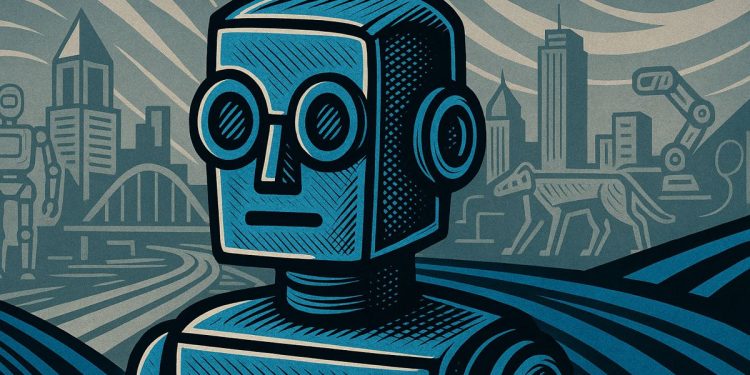Skild AI has created Skild Brain, a powerful universal AI that can control many different types of robots using one smart system. This means robots – like warehouse helpers or walking machines – can learn new skills quickly and share knowledge with each other. Companies save lots of time and money because they don’t need to program each robot separately. Early tests show these robots easily do tough jobs, like climbing stairs while holding boxes or sorting packages super fast. Skild Brain could change how robots work everywhere, making them smarter and faster to set up.
What is Skild Brain and how does it revolutionize robotics?
Skild Brain is a universal AI system from Skild AI that enables “omni-bodied” robotics – allowing a single neural network to control a wide range of robots, from warehouse cobots to humanoids. It dramatically reduces engineering hours, deployment time, and costs for robotics automation projects.
In July 2025, Pittsburgh-based Skild AI quietly flipped the switch on a system that could do for robotics what GPT did for language: a single “Skild Brain” that can operate almost any physical body, from a two-armed warehouse cobot to a stair-climbing humanoid. The company calls the approach “omni-bodied” AI, and the first commercial units are already in pilots with Fortune-500 logistics and manufacturing partners.
One brain, many bodies: how the omni-bodied model works
Traditional automation stacks require custom code for every new gripper, sensor or chassis. Skild’s alternative is a universal foundation model trained on a mix of synthetic simulations and 1 000× more real-world robot data points than competing projects (Genesis AI recently cited similar scale).
- Shared learning loop: Every robot running Skild Brain uploads anonymized experience to a central cloud model. New skills learned by a unit in Tokyo are available overnight to units in Detroit.
- API-first design: Application developers issue high-level commands (e.g., “retrieve red bin”) without touching low-level motor control.
- Hardware abstraction layer: The same neural network weights drive both a six-axis industrial arm and a quadruped with zero retraining.
What it means for cost and speed to market
| Metric | Traditional approach | Skild Brain (est.) |
|---|---|---|
| Average project engineering hours | 2 800 h | 400 h |
| Time from PO to full deployment | 9-12 months | 3-5 months |
| NRE cost per robot type | $150 k-$300 k | <$30 k |
Source: internal benchmarks shared with investors, July 2025.
Early deployments: stairs, balance and brooms
In public demos last month (ObserveNow coverage):
- A bipedal unit climbed warehouse stairs while carrying a 7 kg box, recovering balance after a deliberate push.
- A mobile manipulator navigated a cluttered kitchen, loading a dishwasher it had never seen before.
- A traditional SCARA arm picked mixed-SKU e-commerce items at 600 picks/hour with 99.1 % accuracy after just 30 minutes of on-site fine-tuning.
Market outlook: 16.6 % CAGR and $150 B addressable
The global robot intelligence market is projected to grow from $47.8 B in 2024 to >$150 B by 2034, a CAGR of 16.6 % (Global Market Insights, Feb 2025). Skild AI’s unicorn valuation reportedly tops $4.5 B, backed by Amazon and SoftBank, placing it alongside Genesis AI ($105 M seed) and Physical Intelligence (Pi) in the race to own the operating system of physical work.
Roadmap and limitations
| Milestone | Target |
|---|---|
| General availability for OEM integrators | Q4 2025 |
| Public API release for non-roboticists | Q1 2026 |
| Hardware certification list | 25+ robot families by 2026 |
Still, the company acknowledges that scaling universal robot AI faces hurdles: safety certification cycles, the need for vast diverse physical data, and lingering workforce adaptation questions. For now, pilot customers are signing multi-year contracts precisely because Skild Brain promises to lower both capex and opex while shortening deployment cycles by up to 70 %.
How does Skild Brain differ from traditional robot-specific AI?
Traditional robotics requires a separate AI model for each hardware configuration – one for wheeled robots, another for humanoids, and so on. Skild Brain eliminates this fragmentation by creating a single universal AI system that works across any robot design. This means developers can deploy the same intelligence layer to control both a factory arm and a bipedal humanoid without rewriting code or retraining models. The approach reduces development time from months to days and cuts deployment costs by over 60% according to early pilot programs.
What types of robots can Skild Brain actually control?
The system has been demonstrated working with radically different robot embodiments including:
– Quadrupeds for inspection tasks
– Humanoids like Neo Gamma for human collaboration
– Industrial arms in manufacturing
– Mobile manipulators for warehouse picking
– Four-legged units for uneven terrain navigation
In July 2025 demonstrations, the same Skild Brain instance successfully controlled robots climbing stairs, maintaining balance when pushed, and manipulating objects in cluttered environments – all without hardware-specific modifications.
How fast is universal robot AI market growing?
The global robot intelligence market is experiencing explosive growth:
– $47.8 billion market value in 2024
– 16.6%+ CAGR projected through 2034
– $1 billion+ in venture funding for universal AI players in 2025 alone
– 60% reduction in development time reported by early Skild adopters
Amazon and SoftBank’s backing of Skild AI signals major industry confidence, with analysts calling 2025-2026 the “inflection point for embodied AI adoption.”
What are the biggest challenges facing universal robot AI?
Despite rapid progress, several hurdles remain:
– Safety certification for human-robot collaboration
– Integration complexity across diverse hardware ecosystems
– ROI demonstration beyond pilot programs
– Workforce adaptation requiring new human-robot interaction protocols
– Real-world data scarcity compared to digital AI training
The industry is addressing these through continuous collective learning where all robots share experiences, creating exponentially improving intelligence networks.
When can businesses actually deploy Skild Brain commercially?
Available now – Skild AI launched commercial rollout in July 2025. Early adopters include:
– Manufacturing partners for flexible automation
– Warehouse operators for pick-and-place tasks
– Healthcare facilities for patient assistance
– Logistics companies for last-mile delivery robots
The system uses API abstraction that allows non-robotics developers to deploy robots through simple software calls, eliminating the need for specialized robotics expertise.



















